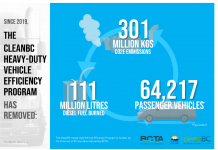Over the past decade or so, the trucking industry has been plagued by so-called “Nuclear Verdicts”. A nuclear verdict is any award that is “out of proportion with the damages suffered”. The American Transportation Research Institute (ATRI) has released a recent study on the impact on the industry, the full study can be found on its website here. The stats show that jury awards greater than $1 million against trucking companies have been on the rise since 2010, adversely impacting insurance premiums. How does a trucking company protect itself from this risk?
It is my opinion, that a robust safety program can be of assistance when litigants come knocking; but only when followed. While the current trend is for trucking companies to seek solutions in the high-tech realm, this is not a panacea for managing litigation risks. Technology such as dash cameras can help quite a bit but must be augmented with strong training & safety programs for a fleet to be successful. Telematics and cameras are merely tools in a fleet safety professional’s arsenal.
A fleet’s success over the long term starts with recruiting; do not relax your standards no matter how many empty seats you have. Bad hiring practices can demonstrate that a carrier is not living up to its obligations under the law to hire & supervise qualified drivers. Setting and sticking to stringent & unwavering hiring standards is imperative to a fleet’s success in mounting a defense should the need arise.
According to the ATRI study, hours of service, driver history, qualification & hiring practices are in the top 10 list of areas that the plaintiff counsel probes when preparing their cases. Many carriers have written safety programs; but are they followed? Follow-through is the key to a successfully functioning safety program. Many companies find themselves failing to document and/or failing to apply the rules they have implemented; this can cause issues should the carrier become involved in a lawsuit. Every policy that makes up part of a carrier’s safety program must be applied uniformly & consistently. A well documented, well functioning safety program can prevent a collision or at least give a carrier some bargaining chips at the mediation table should the worst come to fruition.
“The defense intends to focus on the 30 seconds before the crash. And when I handle a case, I look long before that. I look at how he was hired, how he was trained, and how he was supervised…” (perhaps insert a caption box with this quote?)
When a carrier demonstrates that they have taken all reasonable measures in managing its drivers, they may have a more defensible case. Often, according to the study plaintiff counsel tries to make the motor carrier appear negligent by attacking its selection, onboarding & supervision practices. Do not let simple ‘errors’ go unchecked, coaching and mentoring can go a long way. Often what management sees as a ‘violation’ may be a misunderstanding or misapplication of rules. Be sure to record the interaction even though coaching may not be considered ‘discipline’ per se. Investigate each occurrence, be certain you understand ‘the gap’. Each error and/or violation is a symptom of the overall problem in a fleet.
There are three parts to competency: Knowledge, Skill & Attitude (KSA). Close attention must also be paid to the skill domain. Are your drivers constantly backing into stuff at customers? Are they completing daily inspections, identifying defects & bringing them to the maintenance department’s attention? Are they aware of this obligation? How can we deal with a skill-based issue? Again, most of the time knowledge and skill-based errors are best corrected with training & coaching.
Attitudes are often linked to overall safety culture in the fleet. Are certain behaviours condoned by management? Are certain behaviours inadvertently rewarded? Do drivers feel like safety is a core value based on the organization’s response to safety-related queries? Attitude related violations are some of the most difficult behaviours to correct. When attitude type behaviours are identified, progressive discipline should be considered; they knew and chose to behave negatively. Again, record every interaction with a driver; it is strong evidence that the carrier takes safety seriously.
Finally, audit your safety program regularly. The goal of an audit is to see how effective your program is functioning. The word ‘audit’ is intimidating, but simply put, verify that what you have planned is happening. Observe your fleet in action, are drivers and management following procedures? Review records, especially driver daily logs, are the contents accurate? Finally, a great audit technique is interviewing, does your staff understand what their obligations are? Can they explain them in a cogent fashion? Consider reviewing selection & training records, sitting in a class & reviewing driver qualification files. Always report findings to stakeholders.
In closing, we do not know if nuclear verdicts are here to stay, the message is clear however, juries are sympathetic to plaintiffs injured in large truck crashes. Nuclear verdicts are one of those low likelihood-high potential risks which must be considered. Luck is not a safety program; prevention goes a long way to avoid your fleet defending a lawsuit.






















